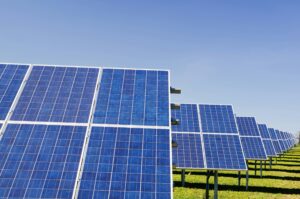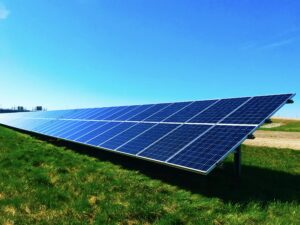Introduction
Hey there! Today, we’re diving into the advantages of renewable energy. If you’re curious about the advantages it brings to the table and how it can shape a better future for all of us, you’re in for a treat. Renewable energy is more than just a buzzword; it’s a game-changer that holds the key to a sustainable and greener tomorrow. So, let’s embark on this enlightening journey together and explore the myriad benefits that come with embracing renewable energy!
Harnessing the Power of Nature with Renewable Energy
Before we dive into the perks of renewable energy, let’s get acquainted with what it actually means. Renewable energy, also known as clean energy, is derived from naturally occurring sources that are replenished constantly. These sources include sunlight, wind, water, geothermal heat, and biomass. Unlike traditional fossil fuels, which deplete over time, renewable energy offers an everlasting and eco-friendly alternative.
Renewable energy technologies harness the inherent power of nature, converting natural resources into usable energy forms. The primary advantage of this approach is that it significantly reduces our reliance on finite fossil fuels, reducing greenhouse gas emissions and environmental degradation. The sustainable nature of renewable energy ensures that future generations will have access to clean energy sources, fostering a more resilient and greener future.
A Breath of Fresh Air: Clean and Sustainable Energy
One of the most significant advantages of renewable energy is its environmental impact, or rather, the lack thereof. When we harness power from renewable sources, we produce little to no harmful emissions, such as carbon dioxide and other pollutants. This not only improves air quality but also helps combat climate change and its associated challenges.
Traditional energy sources, such as coal and natural gas, release vast amounts of carbon dioxide and other greenhouse gases into the atmosphere when burned. These emissions contribute to the greenhouse effect, trapping heat and leading to global warming. On the other hand, renewable energy sources produce little to no greenhouse gas emissions, making them a crucial tool in the fight against climate change.
Unleashing Solar Power: The Sun as a Limitless Resource
Solar energy, harnessed through photovoltaic panels or solar thermal systems, offers a bountiful source of clean power. By tapping into the sun’s rays, we can generate electricity and heat water for homes and businesses. Plus, did you know that enough sunlight hits the Earth in one hour to power the entire world for a year? Now, that’s what we call an endless supply of energy!
Solar power has experienced remarkable advancements in technology and cost-effectiveness in recent years, making it increasingly accessible to individuals and communities. Photovoltaic panels, made from semiconductor materials, convert sunlight directly into electricity. Solar thermal systems, on the other hand, use mirrors or lenses to concentrate sunlight and produce heat, which can then be used for various applications.
Riding the Wind: Embracing the Gusts of Change
Wind energy is another incredible asset in the renewable energy arsenal. Giant wind turbines convert wind’s kinetic energy into electricity, providing a reliable and sustainable power source. Wind farms have the added advantage of minimal land usage, making them ideal for supporting energy needs while preserving natural landscapes.
Wind power has a long history and has been utilized for centuries, from windmills for grinding grain to modern wind turbines for electricity generation. Today’s wind turbines have seen significant technological improvements, with larger blades, efficient designs, and better placement in wind-rich areas, leading to higher electricity output.
Hydropower: Making a Splash for a Greener Future
Hydropower, generated by capturing the energy from moving water, is a force to be reckoned with. Dams and hydroelectric power plants turn the flow of rivers and tides into electricity, offering a consistent and efficient energy supply. Not only does this provide us with electricity, but it also offers flood control, irrigation, and water supply management.
Hydropower is one of the oldest and most widely used forms of renewable energy. The sheer scale of hydropower plants can vary, from large dams that produce massive amounts of electricity to small run-of-the-river installations that serve local communities. The key advantage of hydropower is its ability to provide reliable baseload electricity, making it a vital component of a sustainable energy mix.
Unearthing Geothermal Energy: Tapping into Earth’s Heat
Geothermal energy allows us to tap into the Earth’s heat for power generation. By accessing hot rocks and reservoirs of steam below the surface, we can produce electricity and heat buildings. The best part? Geothermal energy is available 24/7, regardless of weather conditions, making it a reliable source of power.
Geothermal power plants utilize the Earth’s natural heat as a clean and continuous energy source. The process involves drilling deep wells to access geothermal reservoirs, where hot water and steam exist. This superheated fluid is brought to the surface and used to drive turbines, generating electricity. Geothermal energy is especially beneficial for regions with significant geothermal resources, as it offers a dependable and sustainable power supply.
Biomass: Fueling Energy with Organic Matter
Biomass energy uses organic materials such as wood, agricultural residues, and even municipal solid waste to produce electricity and heat. By repurposing waste materials and plant matter, we reduce our dependence on fossil fuels while mitigating waste disposal issues.
Biomass energy encompasses a wide range of technologies, from burning wood for cooking and heating to advanced biopower systems that use agricultural residues and organic waste for electricity generation. Biomass is considered a carbon-neutral energy source, as the carbon dioxide released during combustion is equal to the carbon dioxide absorbed by plants during their growth. Proper management of biomass resources is essential to ensure sustainable and efficient utilization of this renewable energy source.
A Breath of Fresh Air Indoors: Improved Indoor Air Quality
Aside from reducing outdoor air pollution, renewable energy also contributes to better indoor air quality. Traditional energy sources like coal and gas can release harmful pollutants inside homes and buildings, leading to respiratory issues. Switching to cleaner energy can alleviate these health concerns and create a more comfortable living environment.
Indoor air pollution can pose significant health risks, particularly for vulnerable populations such as children, the elderly, and individuals with respiratory conditions. Renewable energy technologies, such as solar panels and wind turbines, produce electricity without emitting harmful pollutants, resulting in improved indoor air quality. By transitioning to clean energy sources, we not only protect our environment but also safeguard our health.
Job Creation and Economic Growth: Powering the Economy
Renewable energy industries have emerged as major job providers. As the world shifts towards cleaner energy, new job opportunities open up in manufacturing, installation, maintenance, and research sectors. These industries not only power homes and businesses but also fuel economic growth and drive innovation.
The renewable energy sector has witnessed impressive growth in recent years, contributing to job creation and economic development in many countries. Solar panel manufacturing, wind turbine installation, and research into new renewable technologies have become significant sources of employment. Embracing renewable energy can act as an economic catalyst, attracting investments and driving regional development.
Energy Independence: Breaking Free from Fossil Fuel Dependence
Relying on renewable energy sources enhances a nation’s energy independence. By reducing dependence on imported fossil fuels, countries can strengthen their energy security and foster greater control over their energy resources.
Many countries rely heavily on imported fossil fuels, which can make them vulnerable to price fluctuations and geopolitical tensions. By diversifying their energy mix and incorporating more renewable energy sources, nations can achieve a higher degree of energy independence. Investing in domestic renewable resources not only reduces reliance on foreign energy supplies but also strengthens the overall resilience of the energy sector.
Mitigating Climate Change: A Critical Step Towards a Sustainable Future
The advantages of renewable energy in combating climate change cannot be overstated. By minimizing greenhouse gas emissions, we contribute to stabilizing the climate and mitigating the adverse effects of global warming.
The burning of fossil fuels releases large amounts of carbon dioxide and other greenhouse gases into the atmosphere, leading to an enhanced greenhouse effect and global warming. The consequences of climate change, such as rising sea levels, extreme weather events, and disruption of ecosystems, pose significant threats to both human populations and biodiversity. Transitioning to renewable energy sources is a vital step towards reducing greenhouse gas emissions and ensuring a sustainable future for all living beings.
Lowering Energy Costs: Saving the Planet and Your Wallet
Renewable energy not only benefits the environment but also our pockets. As technology advances and clean energy becomes more accessible, the cost of producing renewable energy has decreased significantly. This translates to lower energy bills for consumers, making it a win-win situation.
The cost of renewable energy technologies, such as solar panels and wind turbines, has seen a substantial decline in recent years. Technological advancements, economies of scale, and increased market competition have contributed to making renewable energy increasingly cost-competitive with traditional fossil fuels. As the cost gap continues to narrow, transitioning to renewable energy sources becomes not only an environmentally responsible choice but also a financially savvy one.
Future-Proofing Energy Supply: An Investment for Tomorrow
One of the biggest advantages of renewable energy is that it is an investment in the future. As fossil fuel reserves deplete, renewable energy sources remain abundant and everlasting. By transitioning to clean energy now, we ensure a secure and sustainable energy supply for generations to come.
Fossil fuels are finite resources that will eventually become depleted, leading to a surge in demand for alternatives. Renewable energy sources, such as solar, wind, and hydro, have the advantage of being continually available and can be harnessed perpetually. By investing in renewable energy infrastructure, we future-proof our energy supply, ensuring that our energy needs are met without compromising the well-being of future generations.
Fostering Technological Advancements: Pioneering Innovation
The pursuit of renewable energy has led to impressive technological advancements. From highly efficient solar panels to innovative wind turbine designs, clean energy research fuels progress and drives us toward a more advanced and sustainable future.
The transition to renewable energy has driven significant innovation in energy technologies. Research and development in the renewable energy sector have resulted in breakthroughs in efficiency, storage, and integration. Cutting-edge materials and novel designs have improved the performance of renewable energy systems, making them more reliable and cost-effective. By nurturing this culture of innovation, we can push the boundaries of renewable energy even further and address the challenges of energy sustainability.
Promoting Environmental Stewardship: Leaving a Green Legacy
Embracing renewable energy is an act of environmental stewardship. By choosing cleaner alternatives, we leave behind a legacy of care and responsibility for the planet, ensuring that future generations inherit a world worth cherishing.
Environmental stewardship is the recognition of our duty to protect and preserve the Earth’s natural resources for current and future generations. Renewable energy embodies this principle by offering a cleaner and more sustainable alternative to fossil fuels. By embracing renewable energy sources, we demonstrate our commitment to safeguarding the environment, reducing our ecological footprint, and creating a greener legacy for the generations to come.
Disadvantages of Renewable Energy
While renewable energy comes with numerous advantages, it’s important to consider its limitations as well. One of the primary disadvantages is the high initial cost of setting up renewable energy systems. The installation of solar panels, wind turbines, or hydroelectric dams can require significant capital investment.
Another challenge lies in the intermittent nature of some renewable sources. Solar and wind energy, for example, are highly dependent on weather conditions, requiring effective energy storage solutions or backup systems to ensure a stable supply. The technology for energy storage is still developing and currently adds to the overall cost.
Additionally, the environmental impact of renewable energy isn’t entirely benign. The manufacturing, transportation, and disposal of solar panels and wind turbines come with their own set of environmental concerns, including resource extraction and waste management. Therefore, while renewable energy is a greener alternative to fossil fuels, it’s not entirely without drawbacks.
Future Possibilities in the Renewable Energy Arena
The future for renewable energy is brimming with possibilities, driven by technological innovation and growing awareness about climate change. One promising area is the development of more efficient energy storage solutions, which could address the intermittency issues associated with solar and wind power. Advanced battery technologies like solid-state or flow batteries are showing potential in lab settings.
Another exciting prospect is the integration of smart grids that can manage energy supply and demand more effectively, facilitating the widespread use of renewables. These grids can adjust to fluctuations in energy production and consumption, making the energy infrastructure more resilient and flexible.
Emerging technologies like tidal and wave energy are still in their infancy but offer significant potential for clean, reliable energy. As research progresses, these newer forms of renewable energy could become more financially viable and efficient, thus broadening our energy portfolio.
Countries Leading the Way in Renewable Energy Initiatives
Several countries have taken the lead in pushing forward the renewable energy agenda, both in policy and implementation.
Denmark: The Wind Energy Pioneer
Denmark has set an ambitious target to be free of fossil fuels by 2050, and the country is well on its way to achieving this goal. Wind energy is the cornerstone of Denmark’s renewable strategy. Already, nearly half of the country’s electricity comes from wind turbines. What sets Denmark apart is not just the widespread use of wind energy but also its investment in R&D to make turbines more efficient and less costly. Denmark is also a major exporter of wind turbines, making it a global leader not just in consumption but also in renewable energy technology.
Germany: The Solar and Wind Powerhouse
Germany’s Energiewende (“Energy Turnaround”) policy is a comprehensive initiative aimed at shifting from fossil fuels to renewable sources, particularly solar and wind energy. Germany has already achieved significant milestones, producing about 46% of its electricity from renewable sources in 2020. Massive public and private investments in solar panels have not only decreased the cost of solar energy but have also made Germany one of the world’s leading solar energy producers, despite its cloudy climate. The country is also focusing on transitioning its automobile industry to electric and hybrid models, further expanding the role of renewables in its energy mix.
China: Emerging Renewable Energy Giant
China is fast becoming a significant player in the renewable energy sector, despite criticisms about its environmental policies. Fueled by rapid industrialization, China faces severe environmental challenges but is addressing them by investing heavily in renewable technologies, especially solar and wind energy. The country is the world’s largest producer of solar panels and has ambitious plans to install more wind turbines. China’s renewable energy approach is driven both by a need to reduce crippling air pollution and a desire to dominate the global renewable energy technology market.
Iceland: Harnessing Geothermal Energy
Iceland stands out for its use of geothermal energy, a renewable resource that is abundant in the country due to its volcanic landscape. Nearly 90% of homes in Iceland are heated with geothermal energy, and it accounts for approximately 30% of the country’s electricity production. Because of the constant availability of geothermal energy, Iceland doesn’t face the intermittency issues that plague other types of renewable energy, making it a consistent and reliable energy source.
Norway: The Hydroelectric Leader
Norway’s mountainous terrain and abundant water resources make it ideal for hydroelectric power, which supplies nearly all of the country’s electricity. Norway not only produces enough hydroelectric power for domestic use but also exports it to neighboring countries. Furthermore, the revenue generated from hydroelectricity has enabled Norway to invest in other renewable energy technologies, making it a well-rounded player in the renewable energy sector.
Sweden: A Holistic Approach to Renewables
Sweden has taken a diversified approach to renewable energy, utilizing a mix of hydro, wind, and bioenergy. The country has set an impressive goal to run entirely on renewable energy by 2040. Sweden’s energy policy is highly participatory, involving not just the government but also private stakeholders and citizens. Tax incentives and grants have encouraged individuals and companies to invest in renewable energy technologies, making it a community-wide effort.
Conclusion: Advantages of Renewable Energy
The advantages of renewable energy are both immediate and long-lasting, offering a path to a sustainable and stable future. From reducing greenhouse gas emissions to lessening our reliance on fossil fuels, renewable energy presents an environmentally responsible choice for powering our lives.
Economic benefits should not be overlooked either. Investment in renewable energy sources such as solar, wind, and hydro creates jobs and fosters innovation. This sector promises not just energy sustainability but also economic vitality, especially in communities that can harness local natural resources.
Moreover, renewable energy contributes to public health by mitigating the effects of pollution. Cleaner air and water mean fewer health complications, which translates into reduced healthcare costs over the long term. By making a switch to renewables, we’re not just saving the planet but also investing in our well-being.
However, the advantages of renewable energy aren’t just local; they’re global. Renewable technologies have the potential to provide energy access in underserved regions, bridging the energy divide and fostering global equity.
In closing, the advantages of renewable energy touch every facet of life—environmental, economic, health, and social. As technology advances, these benefits are only going to become more pronounced. The transition to renewable energy isn’t just an option; it’s a necessity for a sustainable future.
Advantages of Renewable Energy: Frequently Asked Questions
How does renewable energy contribute to a more sustainable world?
Renewable energy reduces greenhouse gas emissions, promotes energy independence, preserves natural resources, and fosters economic growth, all of which contribute to a more sustainable and resilient planet. By harnessing the Earth’s natural resources without depleting them, we ensure that future generations can continue to enjoy the benefits of clean and renewable energy sources.
Are renewable energy sources reliable, especially during adverse weather conditions?
Yes, one of the great advantages of renewable energy sources is reliability even during adverse weather. For instance, solar panels can still generate power on cloudy days, and wind turbines are designed to withstand harsh weather conditions. Moreover, the integration of multiple renewable energy sources and energy storage technologies enhances the resilience and reliability of renewable energy systems.
Is renewable energy expensive to implement at the individual level?
While the initial installation costs for some renewable energy systems may be higher, the long-term savings on energy bills and potential government incentives make it a financially viable and smart choice. Additionally, the declining cost of renewable energy technologies has made them increasingly accessible to individuals and businesses alike.
What role can individuals play in promoting renewable energy adoption?
Individuals can play a crucial role by supporting policies that encourage clean energy, using renewable energy in their homes and businesses, and advocating for sustainable practices in their communities. By making conscious decisions to invest in renewable energy technologies, individuals can influence market demand, drive innovation, and contribute to a more sustainable energy future.
Can renewable energy really replace fossil fuels entirely?
While renewable energy has the potential to significantly reduce our dependence on fossil fuels, a complete replacement may take time. The energy transition requires comprehensive planning, investments, and policy support to overcome existing infrastructures and practices built around fossil fuels. However, with continuous advancements in renewable energy technologies and increasing global commitments to combat climate change, we are moving towards a future where renewable energy plays a more prominent role in meeting our energy needs.
As we continue our journey towards a cleaner and brighter future, embracing renewable energy remains a paramount priority. The advantages are clear and compelling, from mitigating climate change to fostering economic growth and improving public health. By integrating renewable energy into our lives and advocating for sustainable practices, we not only secure a better world for ourselves but also leave behind a legacy of environmental stewardship for future generations to cherish. So let’s harness the power of nature, embrace renewable energy, and illuminate a path towards a more sustainable tomorrow.




